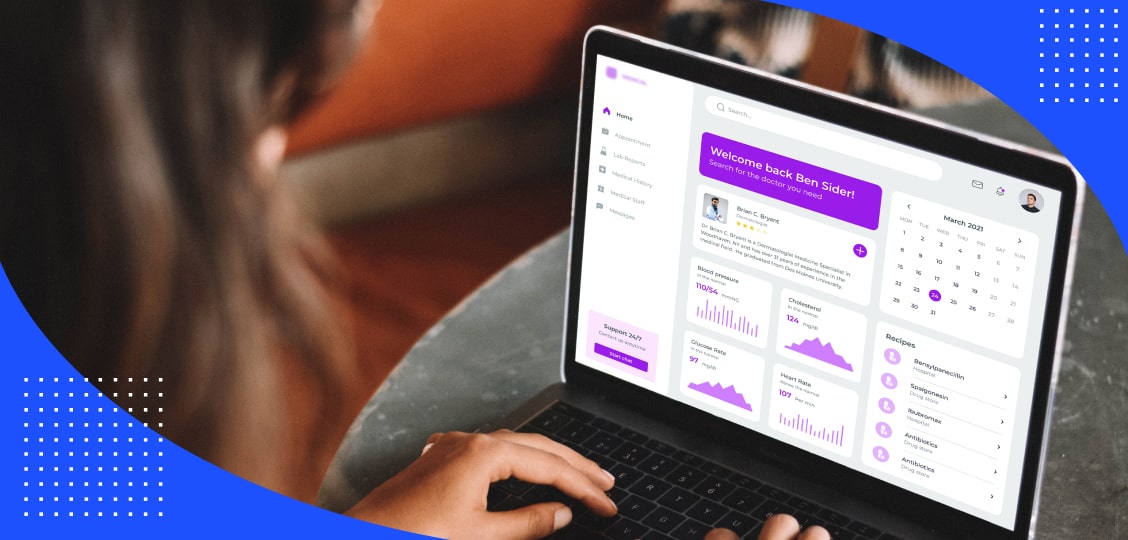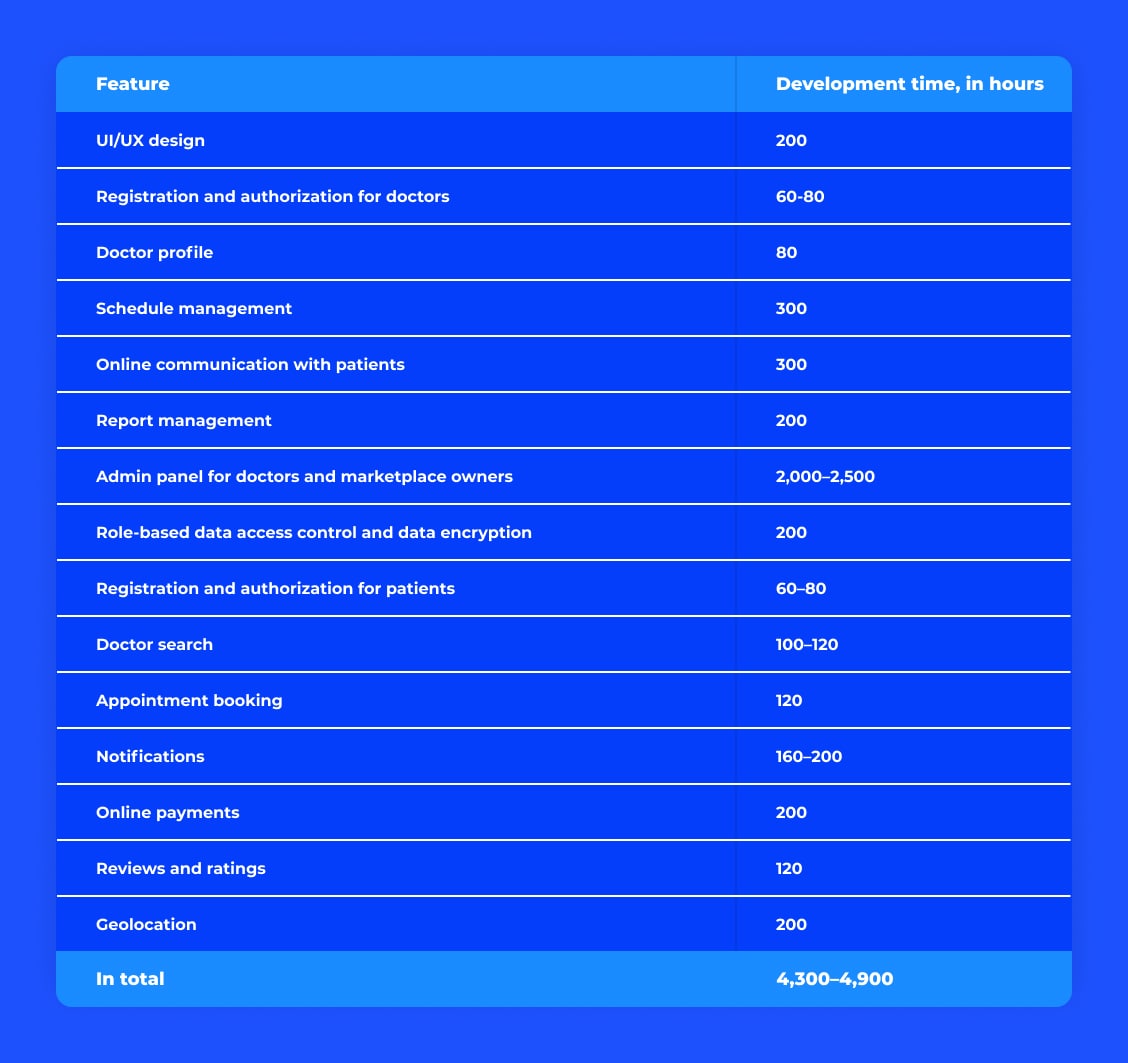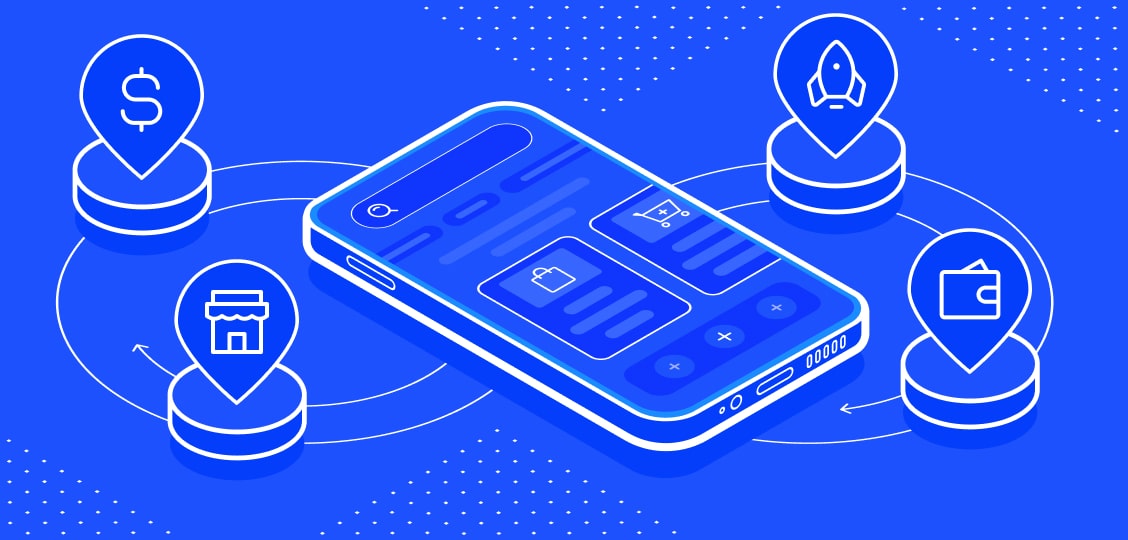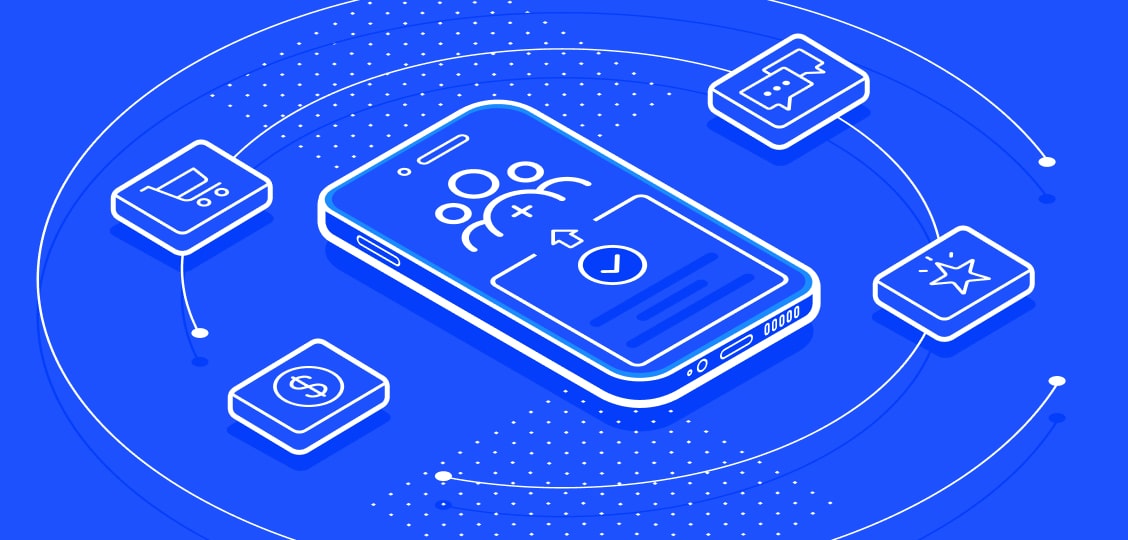Features for medical personnel
1.
Registration and authorization
Medical personnel should have the ability to easily register and
authorize on an online marketplace platform. After signing up,
doctors will be able to add information about their services,
communicate with patients, manage schedules, and track payments.
To prevent fraud and increase trust, the registration process should
include verification of healthcare experts, from their
qualifications to banking details. For instance, you can require
them to provide certain documents and certificates confirming they
have relevant education and experience to offer medical care.
With the view of enforcing security and meeting various
regulations—i.e., HIPAA, GDPR—you need to enable two-factor
authentication.
Time: 60-80 hours
2.
Doctor profile
A profile is an important feature of a healthcare marketplace app
like Zocdoc that generally contains basic information about a
doctor, including name, surname, photo, location, specialty,
education, certifications, and affiliations. It should also provide
details such as user reviews, rating, and type of visits—video or
in-person—delivered by a clinician.
Time: 80 hours
3.
Schedule management
Medical personnel should be able to create, edit, and view upcoming
schedules on a calendar. A healthcare marketplace app should
automatically check the working schedules of healthcare
professionals and tailor the time suitable for both parties.
When building a software platform like Zocdoc, it is crucial to
prevent any contradictions in doctor schedules in case unexpected
events occur.
For example, if a clinician cannot hold video and in-person visits
due to illness, the system should automatically notify patients—via
SMS, email, or in-app message—and offer available appointment slots
of other healthcare professionals.
Find out how our team implemented this functionality when creating
an
online healthcare marketplace for the UK tech company.
Time: 300 hours
4.
Online communication with patients
Video and audio conferencing is a key feature of a doctor
appointment booking app. Thanks to this, clinicians will be able to
conduct virtual visits and consult patients remotely. A healthcare
software development company should enable text messaging by
implementing chats, in which medical experts will share health data,
diagnostic reports, treatment plans, and recommendations.
In order to deliver this functionality, it is possible to integrate
third-party services, this way reducing costs and time to market.
For example, software engineers can use Firebase to incorporate
chats.
With the view of providing video consultations, software engineers
can employ Twilio, a cloud communication platform as a service,
which is also used by Zocdoc. Surely, patients have to be provided
with access to these features.
Time: 300 hours
5.
Report management
When making a healthcare marketplace app like Zocdoc, it is
essential to enable report management. Doctors should have the
possibility to view patient details, clinical records, and personal
notes, as well as share medical reports with customers.
Additionally, you should allow medical providers to check out the
history of communication with patients.
Time: 200 hours
6.
Admin panel for doctors and marketplace owners serving as a separate
app
With an administrator panel, clinicians will get the ability to
manage reports and appointments, keep patient data, as well as view
and analyze patient check-ups and hospital charts. Thanks to this
functionality, healthcare experts can track payments and check out
their income earned for different periods.
Using an admin panel, marketplace owners can add doctors to the
platform, manage users, reviews, and commissions.
Time: 2000–2500 hours
7.
Role-based data access control and data encryption
Medical care providers have to ensure data privacy and ensure
compliance with security regulations such as GDPR (Europe) and HIPAA
(USA). Since an online healthcare marketplace operates with
sensitive health data—patient personal information, clinical
records, treatment plans, etc.—it is crucial to protect against
hacker attacks, malware, viruses, and other threats.
For this purpose, a marketplace development team should implement
features such as role-based data access control (RBAC) and data
encryption. With RBAC, engineers will allow authorized users to
track who introduced which changes, as well as prevent unnecessary
alterations to health data.
Time: 200 hours
Features for patients
1.
Registration and authorization
After registering on the platform, customers can receive medical
care online while getting access to the functionality. When creating
an online healthcare marketplace, it is important to provide
authorization via multiple ways to ensure the convenience of use.
For instance, you can allow for signing in/up with Google, Facebook,
Twitter, Apple, and email. To deliver this feature, online
marketplace developers will integrate the app with APIs of
third-party services. Furthermore, engineers should implement
two-factor authentication to increase security.
Check out a
list of third-party services
you can integrate a healthcare marketplace app with.
Time: 60-80 hours
2.
Doctor search
Doctor search is another important feature of an online healthcare
marketplace. To ensure a seamless user experience, you should add as
many filters and categories as possible, so that customers can find
the required specialists in seconds.
In addition, you can enable users to search for clinicians by
symptoms and medical procedures, which will help you boost patient
satisfaction. Explore how our engineers developed this functionality
for an
online doctor appointment booking app.
Time: 100-120 hours
3.
Appointment booking
This feature allows patients to see available time slots on a
calendar incorporated into a healthcare marketplace app and book
appointments online.
Time: 120 hours
4.
Notifications
A doctor appointment booking app should automatically send patients
notifications, inform them about appointment time changes, and
remind them about taking medicines or visiting a clinician.
To cut expenditures and save time while saving quality, it is
reasonable to integrate a healthcare marketplace platform with a
third-party API like Firebase. As a result, software engineers won’t
have to implement this feature from scratch.
Time: 160-200 hours
5.
Online payments
When building a healthcare marketplace app like Zocdoc, you should
provide a variety of payment methods to satisfy user needs. The best
way to implement this functionality is to integrate a software
platform with a payment gateway—for instance, Stripe, PayPal, or
Braintree—to enable transaction processing and authorization.
Acting as an intermediary between doctors and customers, this
solution will serve for verifying patient card details and the
availability of funds. By using a single payment gateway, you will
get access to a range of options.
For example, Braintree supports transactions via PayPal, Venmo,
numerous credit and debit cards, digital wallets (i.e., Google Pay,
Apple Pay, Samsung Pay), and bank directs (iDeal, Trustly,
Bancontact, and GiroPay, etc.).
It is noteworthy that popular payment gateways safeguard data by
delivering features such as 3D Secure, AVS (Address Verification
System), and CVV (card verification code check).
At
Arateg,
we make integrations with various gateways, involving Stripe,
PayPal, Braintree, Amazon Pay, Square, 2Checkout, and Authorize.net.
Learn
how to choose a payment gateway for an online marketplace platform
in 5 steps.
Time: 200 hours
6.
Reviews and ratings
To increase trust in your online healthcare marketplace, it is
essential to allow users to find the best doctors based on customer
feedback. With review and ratings, customers can check out the
feedback of other patients and make more informed decisions when
choosing a specialist.
Time: 120 hours
7.
Geolocation
An online healthcare marketplace has to identify the location of
customers to show them doctors in their geographic area. Thanks to
this feature, patients will be able to book an appointment and find
medical experts near their homes.
Time: 200 hours




